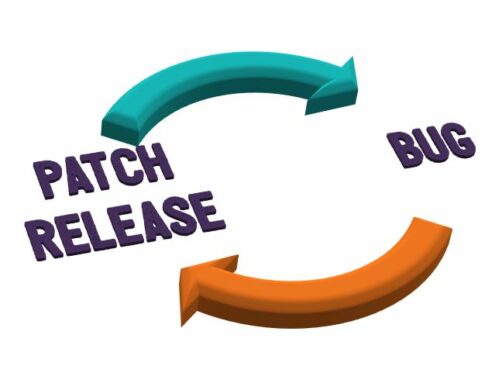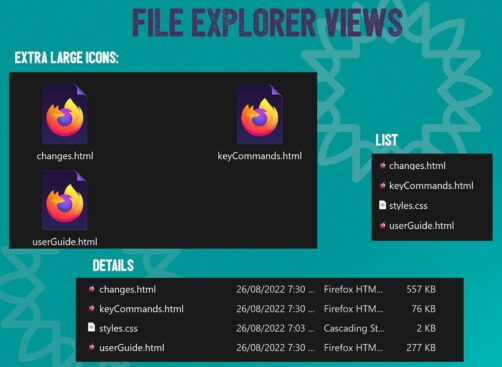We’re into spring, or autumn (or fall) depending on what hemisphere you are in – or are we? Well astronomically, the equinox isn’t until the 23rd of September, so we’re still in Winter (or summer). But meteorologically, seasons start from the 1st of the month. The reason is that this divides the seasons into relatively-equal three-month blocks. This makes calculating things like rainfall this spring vs spring last year easier. But enough about the weather – we’ve got releases to cover!
Releases
In the last edition of In-Process we covered “Surprise” releases. As if to underline that word, just after In-Process came out, we had another pair (2022.2.2 stable and 2022.3 beta 4)! I updated the links in that post, and I expect most users should have also been offered the updates by NVDA itself by now. If you have update checking turned off, fear not, I’ve got the info here for you:
NVDA 2022.2.2
When we rolled out the security fix 2022.2.1 (and 2022.3 beta 3) , we inadvertently broke custom input gestures. 2022.2.2 stable and 2022.3 beta 4 contain a fix for that issue, as well as the earlier security fix.
Stable users, read the full what’s new and download 2022.2.2.
Beta users, read the full what’s new and download 2022.3 beta 4.
Forthcoming releases

Text “Patch Release” in purple. Turquoise arrow from this to the text “Bug”. Orange arrow from the word “bug” back to “Patch release”.
Releases beget releases, or so we say. Well, there is something to it, this time at least. We are aware with a bug with the current patch release, which affects users of some add-ons including NVDA Remote. We’ve almost got a patch release ready to fix the patch release, and we’ll have that out in a few days. Whether you are using NVDA 2022.2.2 or NVDA 2022.3 beta 4, it will offer to install the new releases when they come out. Be sure to have “Check for updates” enabled in NVDA’s general settings.
If you need to use NVDA Remote in the meantime, to lock or unlock your PC, please use NVDA 2022.2 until the new release is out.
Translatable string freeze
With the new releases, we have entered another translatable string freeze for 2022.3. Translators have until 23:59 UTC on Wednesday 14 September to ensure translations are up to date. Thank you to all our translators. We, and all the users, appreciate all of your hard work!
Changing the view in File Explorer
File Explorer, or Windows Explorer, lets you navigate and launch any type of file on your PC. You can also copy and move files. Depending on your own preferences, you may want more or less information about the files in a folder. Windows offers quite a few different folder views. While any of them work with NVDA, a lot of them are arranged in a grid view. If you simply down arrow through files, you may only find a portion of the files. Some views are designed to use the right arrow to move through them rather than down arrow. You can switch views with keystrokes – control+alt+number. For those used to the down arrow, here are two modes which work best with the down arrow:
- List – This shows only the filenames. To set this view, press control+alt+5
- Details – Shows the file name as well as file size and date and other information. To set this view, press control+alt+6

Three views of file explorer: Extra large icons, list, and details
For those wondering, the other views are:
- Extra-large, Large, Medium, and Small – These display a filename only, and a preview image. The size of the image varies. Use the right arrow to navigate
- Tiles – Like medium icons, but with three lines of information to the right of the preview. Use the right arrow to navigate. Content – Similar again but all in one list.
Errors in the log
NVDA occasionally encounters errors, things which don’t behave as it was expecting. Often, NVDA will try something else to get the right information. In such cases, from a user point of view, the feature works as expected. In stable and release candidate builds of NVDA, you may never notice when such errors happen.
In alpha and beta versions of NVDA, whenever it runs into an error which is written to the log, an audible beep is played. These errors may not cause any problem if NVDA is able to try something else which does work.
Alpha versions are often used by developers, add-on authors and code contributors. When testing new features and fixes, knowing when an error occurs helps with this.
As an end-user, running a beta version, you may hear the beep, even when nothing seems wrong. You should report errors in the following situations:
- When they cause something not to work (if you hadn’t heard the beep would you have known anything was wrong?)
- Where you can articulate the issue and how to recreate it
In such cases, please do the following:
- Set your log level to “Debug”
- Restart NVDA with add-ons disabled
- Recreate the error
- Browse to your %temp% folder
- Locate the nvda.log and nvda-old.log files, as well as nvda-crash.dmp
- Send us those files along with a description
That’s all for this week! Keep an eye out for new releases soon, and we’ll be back with more by around the equinox!